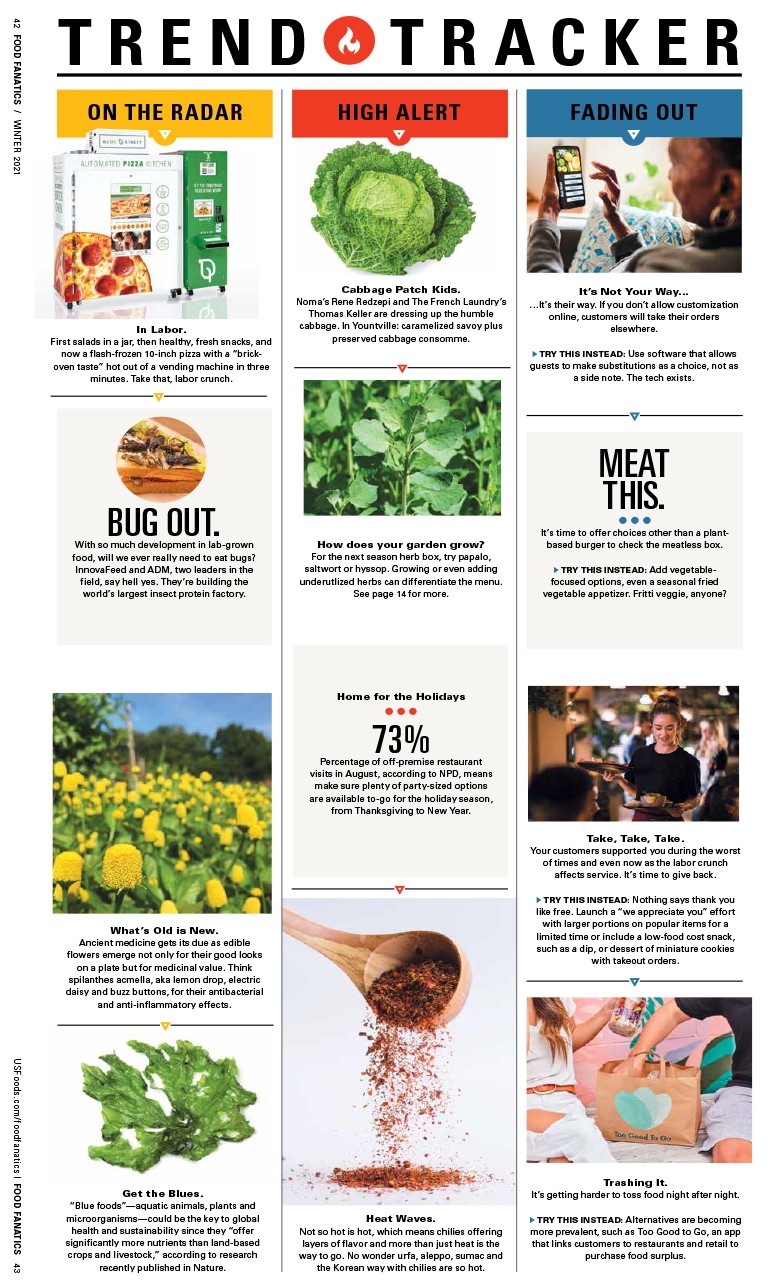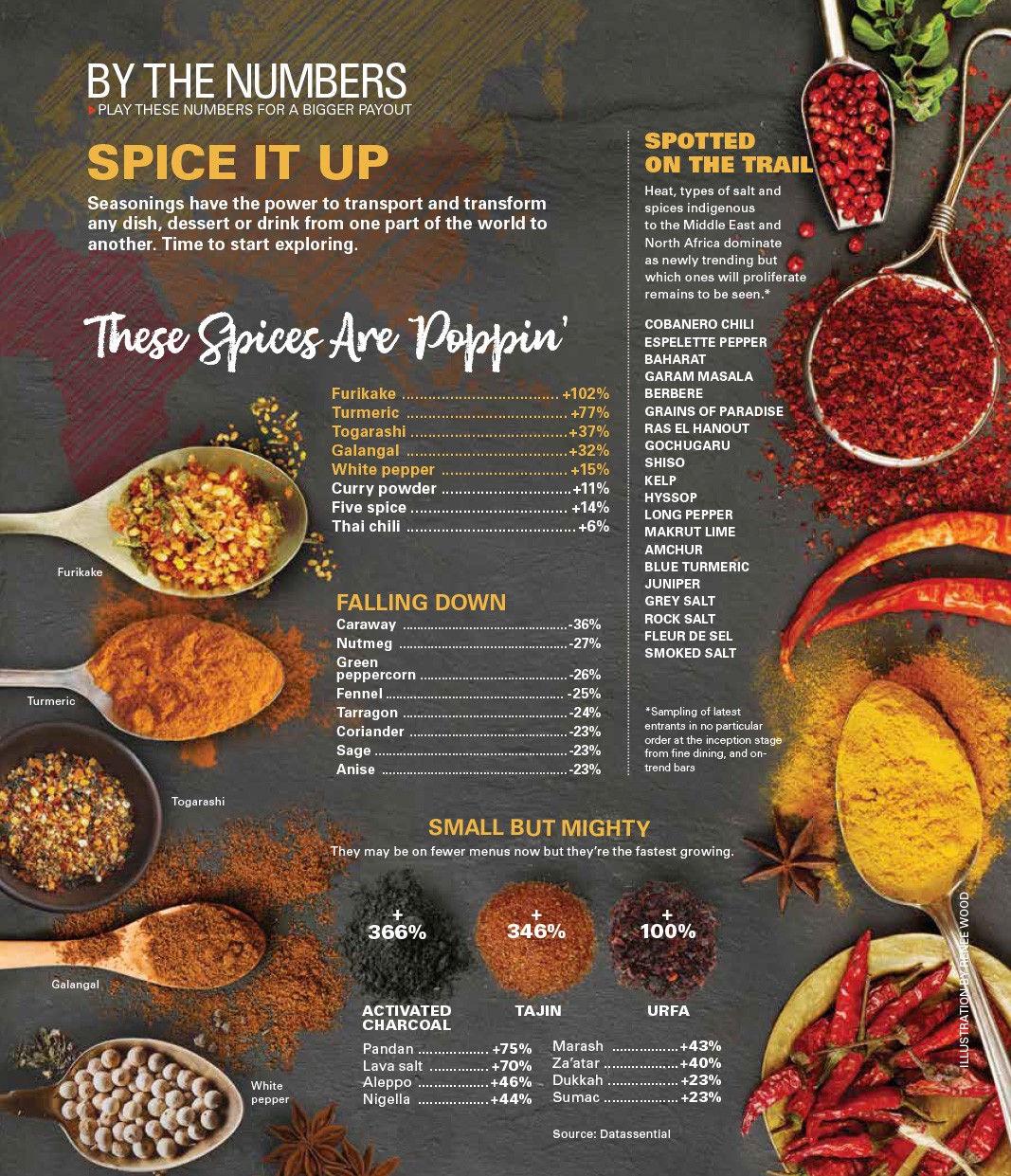Product Line of Business
A signature sauce, condiment or spice can be your claim to fame, but you’ll need to work it
In the 1990s, Chef Daniel Orr rose to acclaim, helming the kitchen at New York’s La Grenouille while writing cookbooks and creating a custom line of spices called Kitchen D’Orr. Several years later, he returned to his native Indiana to open FARMbloomington, reviving his brand with a line of sauces, jams and jellies inspired by the Hoosier state.
“We still have people in New York buying the spice blends online because they can’t live without them,” Orr says of the staying power of his packaged brand products.
With chef-sponsored cookware dominating retail shelves and restaurant-branded sauce bottles and spice blends everywhere, it’s natural to wonder if you could get a piece of the branded-product pie. Sure you can—it’s just a matter of how big you want to be.
Chefs think they can turn a really great chili recipe into a brand product that will put their name in lights, says Karen Foley, senior vice president of sales for Napa, Calif.-based Tulocay & Co., the firm that produces Tyler Florence’s line of products. However, a solid product isn’t a straight shot to success.
“The consumer is already buying a pasta sauce,” Foley says. “You have to convince them to get off that pasta sauce and buy yours instead. You are pulling someone else’s stuff off the shelf to sell yours.”
Experts cite Rick Bayless’ Frontera foods, Momofuku’s cookie mixes and Burger King’s French fry-flavored snack chips as successful restaurant- and chef-branded product lines. Higher-profile restaurants can charge higher prices and have more leeway to create a product that might be a novelty or a souvenir.
Those without industry visibility need to introduce their brand product at a price point competitive with non-branded ingredients. Chef Allen Susser, who has spent 25 years as a Miami restaurateur and now consults with chefs looking to build their brand, says it is crucial to consider the customer.
Know whether customers will buy a bottle of hot sauce in three weeks or a year, and learn how much they’ll pay to replace an empty one. A deal, such as free refills for the first year, can keep consumers connected if that relationship is part of bigger business goals.
At Freshfully, a Birmingham, Ala., grocer focused on Alabama ingredients, the shelves are stocked with lines from nearby restaurants, ranging from barbecue sauces and margarita mixes to frozen casseroles. Freshfully co-owner Jen Barnett says cooking demonstrations often drive the store’s sales because chefs are “great at what they do and know how to use the products.”
Instead of trying to become the next Momofuku, Barnett recommends that chefs start with the smallest possible run and build momentum from there. That might mean building a local following using one spice blend or one sauce with a smaller, artisanal grocer before expanding into a national line.
However, such an approach has its challenges. Larger orders may be the norm for distribution outside of regional markets, and manufacturers may have minimum order requirements for custom product contracts. This means you need to pave the way to selling those items outside your own kitchen—and city—before signing on the dotted line.
Chefs, however, have distinct advantages: a restaurant to showcase their product and diners who easily segue into potential buyers. While most people like to dream big, it’s perfectly effective to stay small and see your product as one of many marketing initiatives.
Margaret Littman writes and lives in Nashville where the famous and good food often intersect.
WALK OF FAMECHRISTINA TOSI, MOMOFUKU MILK BAR, N.Y. Customers who can’t make the trek to New York can just add egg and butter to Tosi’s mixes for fresh-from-the-oven cookies. ANDY RICKER, POK POK, PORTLAND, ORE. Ricker’s authentic Thai Pok Pok Som drinking vinegars stand out among the competition. DAN BARBER, BLUE HILL FARM, N.Y. A growing line of products from jams and pickles to soaps and aprons all have Barber’s farm-fresh seal of approval. TOM COLICCHIO, ’WICHCRAFT, N.Y. Diners who want to skip the line at Colicchio’s sandwich shop, ‘wichcraft, can stock up on panini spreads. |
Tip Jar
Convinced that a line of special sauces is the secret ingredient to the Big Time? Consider this advice:
Think big picture.
If the goal is TV appearances and millions of dollars, shoot for more than a single famous sauce. Karen Foley of Tulocay & Co., says you need 10 to 15 products in a line (Tyler Florence has 16) to fill needs in different categories, price points and seasons. “We create a suite of products that have a story to tell,” she says.
Remember the escape hatch.
An exit plan—for you and your manufacturer—should be outlined in the contract. It might include annual clauses or conditions based on sales volume. No one wants to be stuck in a loser deal.
Stay involved.
Just like in a restaurant, chefs have to stay involved, Foley says. Paying attention to the product consistently is key. No need to copy what customers love in your restaurant. Selling exactly what diners can order off the menu can cannibalize business, says Melissa Wilson, a principal at Chicago-based restaurant consultancy Technomic. But selling a product that highlights a specialty, such as ingredients or specific flavor profiles, can boost sales in both.
Nail down rules and regulations.
Food safety and compliance varies depending on the product. In general, the copacker/manufacturer is responsible for meeting state and federal regulations. If made in house, the restaurant is responsible. Certifications vary by state.



